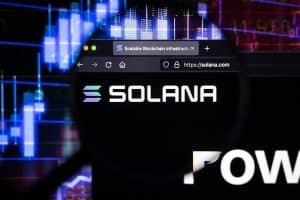Algorithmic Market Operations (AMOS)


What is Algorithmic Market Operations (AMOS)?
Algorithmic Market Activities (AMOs) are operations that manage the supply of algorithmic stablecoins automatically. They manage the collateral ratio, as well as the scalability, decentralization, and transparency of stablecoins.
Understanding Algorithmic Market Operations (AMOS)
Traditional stablecoines are extremely straightforward to comprehend. Fully collateralized stablecoins are the most prevalent variety, as they are backed by currency, crypto, or on-chain tokens that may be redeemed or swapped. Tether (USDT), the most widely used stablecoin with a market value of more than $60 billion as of July 2021, is an example of a collateralized stablecoin. In contrast to Tether, which physically mints or burns coins to raise or decrease supply, algorithmic stablecoins rely on algorithmic market operation modules (AMOs) to govern supply. These are advantageous to the system since they
Traditional stablecoines are extremely straightforward to comprehend. Fully collateralized stablecoins are the most prevalent variety, as they are backed by currency, crypto, or on-chain tokens that may be redeemed or swapped. Tether (USDT), the most widely used stablecoin with a market value of more than $60 billion as of July 2021, is an example of a collateralized stablecoin. In contrast to Tether, which physically mints or burns coins to raise or decrease supply, algorithmic stablecoins rely on algorithmic market operation modules (AMOs) to govern supply. These are advantageous to the system since they allow for scalability while also improving decentralization and transparency.
allow for scalability while also improving decentralization and transparency.
A stablecoin is more likely to reach the growth and size required for adoption if it provides an AMO solution. AMOs also eliminate the need for a centralized team to make internal choices, as smart contracts will take on that role. As a result, the possibility of human mistake and manipulation is reduced.
Every AMO has four characteristics:
- Decollateralization entails lowering the collateral ratio.
- Market operations: this component of the strategy has no effect on the collateral ratio.
- Recollateralization entails raising the collateral ratio.
- FXS1559: the exact number of FXS that can be burned while still profiting beyond the desired collateral ratio.
To keep the stablecoin “stable,” if its price ever rises over its stable peg, the collateral ratio is reduced, supply expands as usual, and the AMO controllers continue to operate. If, on the other side, the collateral ratio falls so low that the stablecoin loses its peg, the AMO can use the preset recollateralization procedure to raise the collateral ratio back up. Because AMOs are a “mechanism-in-a-box,” anyone can build one as long as they adhere to the specifications.
Read related articles:
« Back to Glossary IndexDisclaimer
In line with the Trust Project guidelines, please note that the information provided on this page is not intended to be and should not be interpreted as legal, tax, investment, financial, or any other form of advice. It is important to only invest what you can afford to lose and to seek independent financial advice if you have any doubts. For further information, we suggest referring to the terms and conditions as well as the help and support pages provided by the issuer or advertiser. MetaversePost is committed to accurate, unbiased reporting, but market conditions are subject to change without notice.
About The Author
Damir is the team leader, product manager, and editor at Metaverse Post, covering topics such as AI/ML, AGI, LLMs, Metaverse, and Web3-related fields. His articles attract a massive audience of over a million users every month. He appears to be an expert with 10 years of experience in SEO and digital marketing. Damir has been mentioned in Mashable, Wired, Cointelegraph, The New Yorker, Inside.com, Entrepreneur, BeInCrypto, and other publications. He travels between the UAE, Turkey, Russia, and the CIS as a digital nomad. Damir earned a bachelor's degree in physics, which he believes has given him the critical thinking skills needed to be successful in the ever-changing landscape of the internet.
More articles

Damir is the team leader, product manager, and editor at Metaverse Post, covering topics such as AI/ML, AGI, LLMs, Metaverse, and Web3-related fields. His articles attract a massive audience of over a million users every month. He appears to be an expert with 10 years of experience in SEO and digital marketing. Damir has been mentioned in Mashable, Wired, Cointelegraph, The New Yorker, Inside.com, Entrepreneur, BeInCrypto, and other publications. He travels between the UAE, Turkey, Russia, and the CIS as a digital nomad. Damir earned a bachelor's degree in physics, which he believes has given him the critical thinking skills needed to be successful in the ever-changing landscape of the internet.






















































